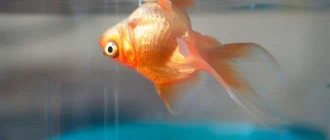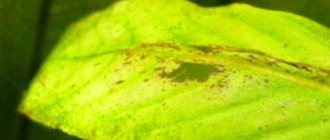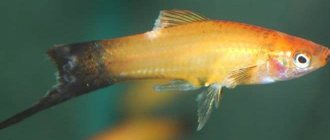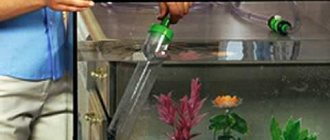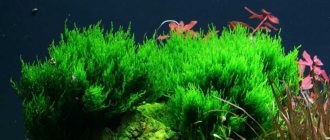If you encounter a black beard in your aquarium, then there is nothing very scary about it, but you will have to tinker with getting rid of it. What is it? Its scientific name is compsopogon coeruleus. Often a black beard is confused with a Vietnamese beard (red beard). But according to taxonomy, Vietnamese and black beard algae belong to the same department. Black beard in an aquarium is small black hairs on plants or any surface (from filter to ground), 0.5-5 cm long, representing a weave of black and green threads. It does not pose any danger to fish. Slow-growing plants suffer first, because their leaves are closed from sunlight, the plant tissue itself is destroyed, which is why the plants actually suffocate.
Global solution to the problem - ways to combat it
Control the amount of feed you pour in.
There is no need to pour more than they can eat within 5 minutes. To get positive results in the fight against black beard, it is advised to plant fast-growing plants that absorb nutrients well, and to stimulate this process, it is also advisable to trim them, since young shoots cope with this task much faster. But before planting plants, they must be disinfected; by the way, scrapers, nets and other devices that you use in the aquarium should also be subject to this procedure.
For good plant development, they must be provided with fertilizers and an optimal level of carbon dioxide. Using a special container or a regular jar of yeast, it is necessary to remove excess oxygen, which hinders development.
Fertilizers are best purchased in the form of ready-made mixtures; they are rich in various microelements and do not have phosphates and nitrates. Still, we should not forget that a small level of nitrates must be present in the water, otherwise the plants will begin to die without consuming phosphates.
You can notice a lack of nitrates by observing plants; their leaves will begin to turn yellow and die. The nitrate content in the water can drop to zero if there are too few fish and too many plants in the aquarium. On average, the norm of nitrates in water is 2-5 milligrams per liter of water.
After some time, you can see a positive result in the destruction of black beard. A clear sign will be a change in the color of the algae; it will begin to gradually lighten and then fall off from the affected areas.
What harm does
Black algae is a real disaster for an aquarium.
The most dangerous consequences of the invasion of this parasite:
- The pest settles on the leaves and stems of slow-growing plants, destroying their soft tissues, leading to their death due to “wounds”. Often the beard even feeds on the juices of the plant on which it lives.
- The algae threads shade the plants, causing them to suffer from lack of light and begin to grow more slowly. Then the black misfortune completely envelops them.
- The parasite can turn particularly tender leaves into mush in a matter of weeks. Sometimes entire plantations of aquarium plant breeders die because of this.
Black algae does not cause direct harm to fish, but it leads to the formation of new foci of rotting at the site of damage and “wounds” of plants, which disrupts the overall balance, including phosphate and nitrate, which indirectly can lead to suffocation and poisoning of fish and shellfish.
Plant repopulation
Adding higher plants like hygrophila, lemongrass, and elodea will help fight black beard. Hornwort, Indian rotala, nayas and vallisneria are especially good for beard removal. The fact is that black beard attacks primarily the simplest plants. During vigorous growth, higher plants absorb nutrients. But for this you need to buy quite a lot of seedlings and provide them with suitable conditions (you can purchase special fertilizers, in which manganese and iron predominate). During growth, it is advisable to prune the plants, since young cuttings absorb nutrients more actively. If the hairs of a black beard turn white, it means that they will soon be completely removed.
Restarting the aquarium
A more radical method. It is necessary to move all the fish into a suitable container and rid the aquarium of water. It is advisable to throw away the plants or tear off the blackened leaves, and treat the bushes themselves with a special disinfecting solution and place them in quarantine. The soil must be steamed in boiling water or calcined in the oven. Stones, driftwood, and jewelry must be cleaned of plaque and disinfected (using hydrogen peroxide, potassium permanganate, chlorine or boiling water). Remove chlorine from the walls and bottom of the aquarium; they can be cleaned with boiling water. After this, you can restart the aquarium. Fighting a black beard may not be so easy, so if no other method has helped, this method will be the most effective.
Where to begin
You need to start at least a week in advance by preparing the required amount of settled water. It will be needed both for temporary holding of fish and for replacing drained liquid. When water reserves are made, the restart process can begin.
Before draining the water, you need to remove all electrical appliances: thermostat, filter, aerator, etc. Then move the fish and other inhabitants of the aquarium to any container suitable for this purpose. To make it easier to catch fish and other aquatic life, it is recommended to drain a certain amount of liquid immediately.
If the aquarium is rebooted for technical reasons or to expand space, then some of the water must be saved. It will be useful for quickly creating a favorable biological balance.
After all living creatures have been relocated, vegetation and decorative elements should be removed. Now you can drain the remaining water and remove the soil. Draining is done through a hose with a funnel attached to it. Then the empty aquarium needs to be washed thoroughly.
Special antiseptics
Furacilin or furazolidone should be dissolved in aquarium water and left for several days. The water may turn yellow for a while, but there is nothing to worry about. And also one of the common ways to get rid of a beard is to dissolve boric acid or borax. All inhabitants need to be evicted and only allowed back after several days. If this is not done, then fish, snails, shrimp or plants may simply die.
Why is it called that?
The plant received its main name because of its appearance. The multicellular algae looks like a cluster of filamentous outgrowths up to five centimeters long. The parasite grows so quickly that in a matter of days the aquarium is covered with a layer of black “wool”. Particularly large colonies on large plants or decorations really resemble a beard.
Appearance
Despite the black tint, the plant is not a brown algae, but a red algae. It is a representative of the genus Compsopogon, the species name is caerules. The threads of the parasite can be colored black-brown, dark gray or completely black. Algae settles on plants, driftwood, soil and decorations. At the beginning it has the appearance of moss, but under favorable conditions the length of the outgrowths quickly increases.
Harmless antiseptics
Such solutions can be purchased at pet stores. One of the advantages is the speed of getting rid of the disease. You can use Sidex, it is absolutely safe for aquarium inhabitants. According to reviews, he can’t always overcome it so well, so many people use AlgaeFix. But its disadvantage is that crustaceans are not friendly with it, and they die when used. A more expensive but faster method may be the use of Aldehyde + CO2; prevention lasts no more than a week. But remember: before using any drug, be sure to read its instructions and contraindications!
Specialized means
Algaecides are widely used to control algae outbreaks. This is the fastest way to get rid of it, but is not always safe. Therefore, the choice of such a drug must be taken very seriously.
To choose the right product, be sure to read the ingredients. Algaecides containing copper sulfate can harm invertebrates (crayfish, snails, shrimp), some fish and plants. The safest drugs are those containing monolinuron or glutaraldehyde. They come in liquid form, in the form of instant tablets, and long-acting insoluble tablets.
By using such products, you can notice results within 3-4 days.
Prevention of black beard
Keeping your aquarium clean
To prevent the appearance of pests, maintaining cleanliness is especially important. This algae absorbs the remains of organic matter that settle on its villi. To prevent the growth of black beard, you need to regularly remove oranic sediment.
The water needs to be changed once a week, updating 25–30% of the total volume each time. In a very neglected and clogged aquarium, the water is changed every day, after first purifying it using an ion exchange filter. This method does not work immediately, but after 2-3 months the amount of beard is significantly reduced.
Dying plants provide fertile ground for bearded algae to grow. They must be removed from the aquarium immediately.
Cleaner fish and snails
There is another option. It is recognized as the most environmentally friendly of all, however, to implement it, you will need to invest money and your own time in searching for inhabitants who would eat the black beard. The only fish that feed on this type of algae are the Siamese algae eater and the ancitrus. They are able to cope with all existing volumes in about a couple of weeks.
However, there is another side to this method. Blackbeard is not the most tasty plant for fish. In order for algae eaters or ancitrus to get to them, they cannot be fed. This cannot be done while there are other inhabitants there. And they won’t start fighting harmful algae right away; while there are younger, greener and juicier plants in the aquarium, these fish will gobble them up.
Another species of aquarium inhabitants that can cope with trouble is ampularia snails. You will need a lot of them, about a hundred of the smallest individuals. The smaller they are, the more effectively they fight the beard. Ideally, they will not exceed the size of a match head. After they have cleaned everything in the aquarium, they must be selected and removed. If this is not done, the babies will begin to grow and completely eat everything green that is in the pond.
It grows quite rapidly, and fighting it takes a lot of time. Even special chemicals and reduced light levels provide only short-term results. To defeat a beard, you need a whole range of measures, time and attention. bba1(1)So, let's start with water, it will have to be changed regularly, in particularly advanced cases this will need to be done every day, replacing from 10 to 25% of the liquid.
Moreover, the water you will fill should also not contain phosphates and nitrates. You will need to control their levels using ion exchange filters. Despite the risk of green algae, it is necessary to increase the light level to somewhere around 0.5-1 W per 1 liter of water with 12 hours a day of continuous operation.
It will be necessary to clear the soil of food residues and remove dead leaves from the plants. Also, it would be nice to have certain types of fish and snails that help in cleaning aquariums from unwanted waste products and algae
XENOCOCUS IN THE AQUARIUM: DESCRIPTION, SYMPTOMS, CONTROL.
AQUARIUM ALGAE AND PESTS
Characteristics and properties
“Blackbeard” is a specific algae that looks like an interlacing of threads of black and green flowers. Belongs to the Compsopogon family of red algae. The average height of the plant is about 5 cm. A characteristic feature is the location of the “black beard” on driftwood, leaves, and stones in the aquarium. Algae can also spread along the ground.
The plant is distinguished by its ability to grow and reproduce rapidly, which is the main danger. Without timely measures taken, the algae penetrates into the deep tissues of other plants, affecting them and negatively affecting the appearance and design of the reservoir.
For fish and other aquarium inhabitants, “black beard” does not pose a danger, but it is still necessary to fight it.
It should be noted that this underwater plant is not considered parasitic, since it does not feed on the juices of other crops. It obtains the substances necessary for its growth and development through photosynthesis, as well as by absorbing organic substances present in the water.




